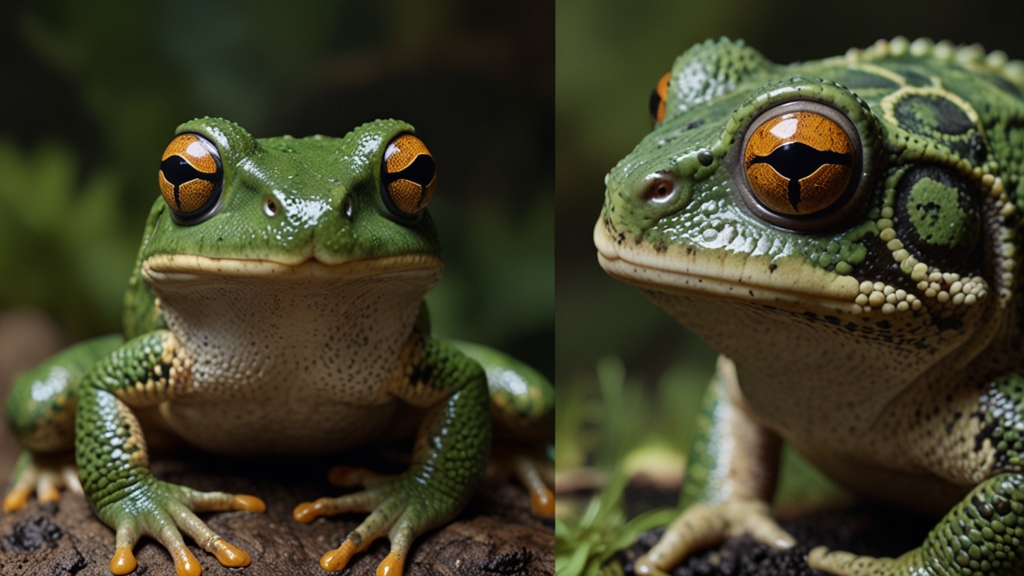Meet the Amphibians: How Reptiles Differ from Their Close Relatives
When we think of cold-blooded creatures, both amphibians and reptiles often come to mind. Though they share several similarities, these two classes of animals possess distinct characteristics that set them apart. Understanding these differences enriches our appreciation of the natural world and fuels the curiosity of both seasoned biologists and budding enthusiasts.
Ancestry and Evolution
Both amphibians and reptiles trace their origins back to a common ancestor, but their evolutionary paths diverged significantly. Amphibians emerged around 370 million years ago, evolving from lobe-finned fish. They were among the first vertebrates to venture onto land. Reptiles, on the other hand, appeared approximately 310 million years ago during the late Carboniferous period. They evolved from early amphibians but adapted features that allowed them to thrive in terrestrial environments.
"Amphibians represent a transitional group of organisms that bridge the gap between aquatic and terrestrial life forms," explains Dr. Helen Marsh, a herpetologist. "Reptiles further diversified from these early amphibians, developing characteristics suited for drier habitats."
Skin and Respiration
One of the most evident differences between amphibians and reptiles lies in their skin. Amphibians have moist, permeable skin that allows them to absorb water and oxygen directly from their surroundings. This makes them highly sensitive to environmental changes and pollutants. Reptiles, in contrast, boast dry, scaly skin made of keratin, which prevents water loss and enables them to inhabit arid regions.
Respiration also varies between these groups. Amphibians can breathe through their skin, lungs, and gills (in their larval stage). Most adult amphibians rely on a combination of cutaneous (skin) and pulmonary (lung) respiration. Reptiles, however, rely exclusively on their lungs for breathing. Their lungs are more efficient than those of amphibians, allowing them to sustain higher levels of physical activity.
Life Cycle and Reproduction
The amphibian life cycle is another point of divergence. Amphibians undergo a process called metamorphosis. They typically start life as aquatic larvae (like tadpoles) with gills, and then gradually transform into air-breathing adults with limbs and lungs. This dual existence ties them closely to water bodies for reproduction and development.
Reptiles do not undergo metamorphosis. They hatch as miniature versions of adults, equipped with the necessary adaptations to survive on land. Most reptiles lay amniotic eggs with leathery or hard shells, which provide protection and prevent desiccation. This innovation allows them to reproduce away from water bodies. Some reptiles, like certain species of snakes and lizards, give birth to live young.
Temperature Regulation
Both amphibians and reptiles are ectothermic, meaning they rely on external heat sources to regulate their body temperature. However, they exhibit different behaviors to manage this. Amphibians tend to be more dependent on water sources to maintain their temperature and hydration levels. They often seek shade or burrow into moist soil during hot periods.
"Reptiles have mastered the art of thermoregulation, basking in the sun to raise their body temperature and seeking shade or burrows to cool down," notes Dr. Michael Rivera, an ecologist. "This ability allows them to occupy a wider range of habitats compared to amphibians."
Ecological Roles
Both amphibians and reptiles play crucial roles in their ecosystems. Amphibians often serve as bioindicators due to their sensitive skin and aquatic life stages. Their presence and health can reflect the state of the environment. Furthermore, they control insect populations and serve as prey for higher trophic levels.
Reptiles, being more diverse and adaptable, occupy various ecological niches. From controlling rodent populations (like snakes) to being top predators (like crocodiles), they maintain the balance in their ecosystems. Some reptiles, like tortoises, play roles in seed dispersal through their dietary habits.
Conclusion
While amphibians and reptiles share a common lineage and some physiological traits, their differences are pronounced and fascinating. From skin type and respiration to life cycles and ecological roles, each group has carved its unique place in the tapestry of life on Earth. By studying these creatures, we gain insights into the intricate workings of nature and the evolutionary adaptations that allow them to thrive in diverse environments.
"Understanding the differences between amphibians and reptiles not only satisfies scientific curiosity but also highlights the incredible diversity and adaptability of life on our planet," concludes Dr. Sarah Liu, a conservation biologist.
Through continued research and conservation efforts, we can ensure that both amphibians and reptiles continue to enchant and educate future generations.







